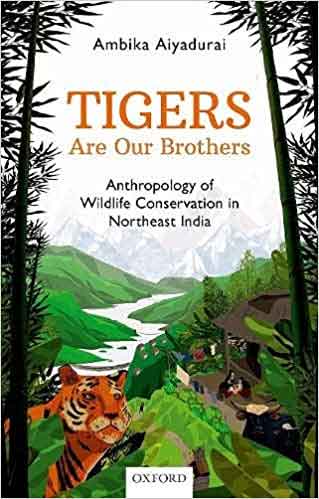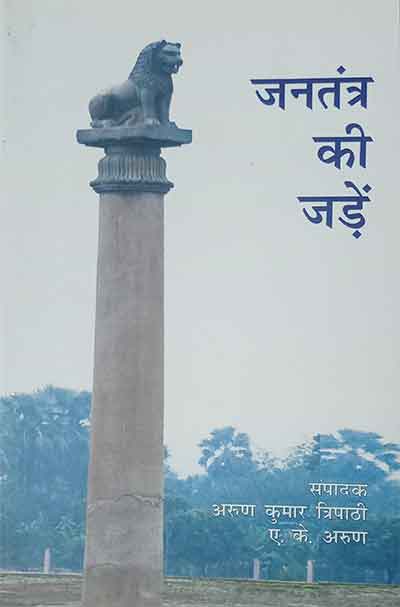There are several aspects of nature protection to consider. Science is one among them which has been playing a major role to protect nature from all the threats. But a scientific understanding of nature is not only enough to protect nature and its components. There are also a few things that are beyond scientific understanding. Similarly, a close relationship between wildlife conservation and tribal society has it’s interchangeably dependent on each other. Recently an Oxford university press book titled ‘Tigers are Our Brothers’ authored by Dr. Ambika Aiyadurai, an IIT Gandhinagar professor has been sought complicated relationships between humans and animals which is also an example of scientific and non-scientific understanding of nature. It is hardly more than storytelling with in-depth research about the Idu Mishmi tribe of Arunachal Pradesh. The tribal community of Idu Mishmi dwells in the upper and lower Dibang Valley in Arunachal. This community believes that tigers are their elder brothers and killing them is taboo in the entire community. At the same time, tigers are the national animal of India in the conservation paradigm.
 This book discussed the emotional and empirical link that exists between a researcher and the subject that they study. The Mishmi community and their relation with wildlife are the subjects for the researcher or author. The first chapter consists of diverse ideas on human-animal relationships. The argument starts with an expert’s or scientific view of nature conservation and tribal’s standpoints. Most importantly it tries to draw the fundamental academic understanding of nature and wilderness, environment, wildlife conservation and indigenous people, nature and neoliberalism, nature extraction and nation, etc. It’s a big concept in contemporary conservation but the author has been successfully conveying her message describing what really it means for a group of people in society. Because it’s been a neutral debate between scientific and non-scientific understanding of nature and its social facts.
This book discussed the emotional and empirical link that exists between a researcher and the subject that they study. The Mishmi community and their relation with wildlife are the subjects for the researcher or author. The first chapter consists of diverse ideas on human-animal relationships. The argument starts with an expert’s or scientific view of nature conservation and tribal’s standpoints. Most importantly it tries to draw the fundamental academic understanding of nature and wilderness, environment, wildlife conservation and indigenous people, nature and neoliberalism, nature extraction and nation, etc. It’s a big concept in contemporary conservation but the author has been successfully conveying her message describing what really it means for a group of people in society. Because it’s been a neutral debate between scientific and non-scientific understanding of nature and its social facts.
The book also sought how the conservation paradigm in mainstream wildlife conservation differs from the indigenous way of thinking about conservation. It is consisting of seven interesting chapters including the introduction of the new conservation ideas, nature and co-existence. The body of the book discusses mostly the author’s experience from both conservation biologist and anthropologist’s perspectives. The worldview of these two disciplinary lenses provides a window into the human-nature interaction, which has been extended beyond science. The more critical without any disciplinary boundaries that make this book very unique to read and learn. It is ethnographic and storytelling on different critical conservation policy issues between indigenous local people and the wildlife conservation community. Among the stories, the tiger rescue and conservation ideas from the local people have been highlighted non-scientifically.
The author claim that this book is an anthropological study of wildlife conservation in northeast India. Whatsoever, it is not only the anthropological study to understand the relationship between wild animals and Mishmi community. It is also a new dimension to look at conservation from the perspective of tribal community which is very important. It opens up an idea of how tribal people understand the biological and social diversity to protect their habitat. They have their own understanding of their habitat which scientific knowledge cannot measure. Also, the scientific idea of conservation tries to dominate the local ideas and somewhere fails to acknowledge the characteristics of local conservation practices.
Secondly, the author successfully illustrated the local consequences of nature conservation and the modern ideas of conservation. She added the scientific methodological barriers of understanding local problems within the conservation community. Researchers rarely could stand in their position when the conservation has to be in action from the community perspective. On the other hand, researchers have to take help from local people to define the human-nature relationships to demonstrate their scholarly abilities. Therefore, she said it is a dilemma of subjectivity-objectivity, insider-outsider, native and non-native in anthropological studies. It is pretty much sure such ontological dilemmas occur in other scientific disciplines too. Because the conservation field has a huge gap between scientific knowledge production and the real consequences of local people with their rituals, belief systems, spirits, taboo and the cultural bonds with nature. Scientific knowledge quantifies anything but the relationship that local people have with nature can’t be quantified based on the feelings, respect, and love that they have for nature. Thus, close relationship between researchers and a particular community can point out many disadvantages of policies that the government implements in the name of development. Thirdly, the book discusses how the Mishmi tribe is socially close to nature and wildlife. It signifies the hunting, unique hunting methods, rituals, taboos, women’s role in hunting, and the community’s ceremonials on animals. At the same time author points out a serious matter about the consequences of conservation laws and tribal people. She said conservation law was created in response to the rapid decline of India’s wildlife and the international pressure to conserve forests and wildlife. Whereas- the creation of protected areas, the subsistence activities of the local people are deemed illegal. Hunting is still existing due to the absence of effective implementation of the law and also because of cultural compulsion.
However, it is more an academic book with collective stories for readers to note interestingly on human and wildlife conservation. There are various actors that are engaged directly or indirectly in wildlife conservation and protection in these borderlands between India and China beyond science. Of course, different agendas are behind the engagement of various actors in the region, details are untold by the author but the reader can understand it easily in the Indian context of conservation. The first and last chapter of the book is the most significant one to understanding the broader conservation idea and world dimension of nature conservation in the favor of Indigenous society to learn from. It could have been more interesting if the author has given more insight into scientific controversies in wildlife conservation and the manipulation of the scientific management on the indigenous people. Overall it is a good read, insightful and enjoyable in the learning process. The arguments in the book are fever to indigenous people’s side from the modern scientific paradigm of nature conservation. Such a book is recommendable for students, conservation social scientists, academicians, nature lovers and the common people that will broaden the Indian human dimension of wildlife conservation and scientific controversies in it.
Rachan Daimary, is a doctoral candidate at Central University of Gujarat and Visiting Fellow at IAS-STS Unit, Graz University of Technology-Austria. Rachan works to understand human nature relationship with the approach of science and technology studies (STS).
Email: [email protected]

















































